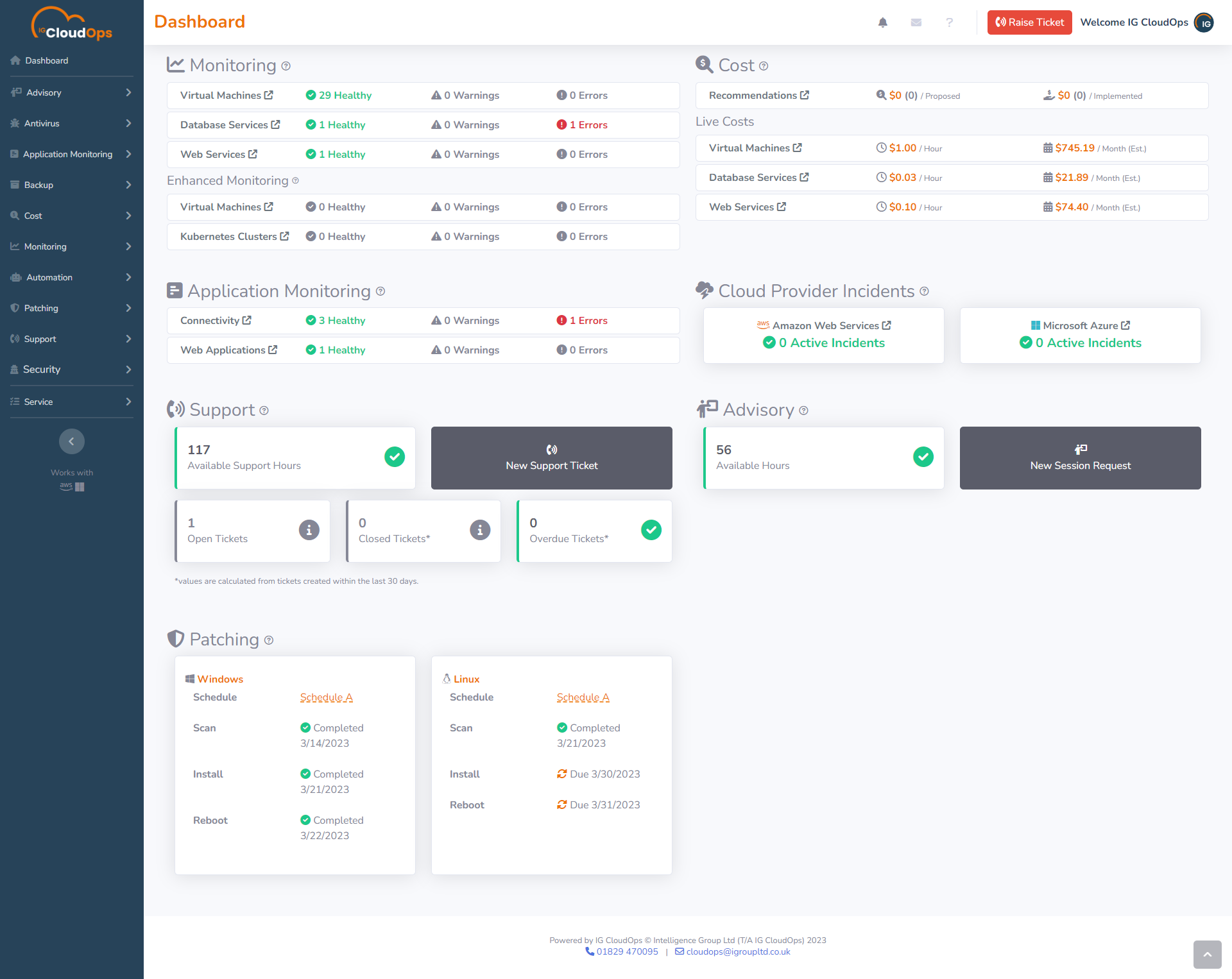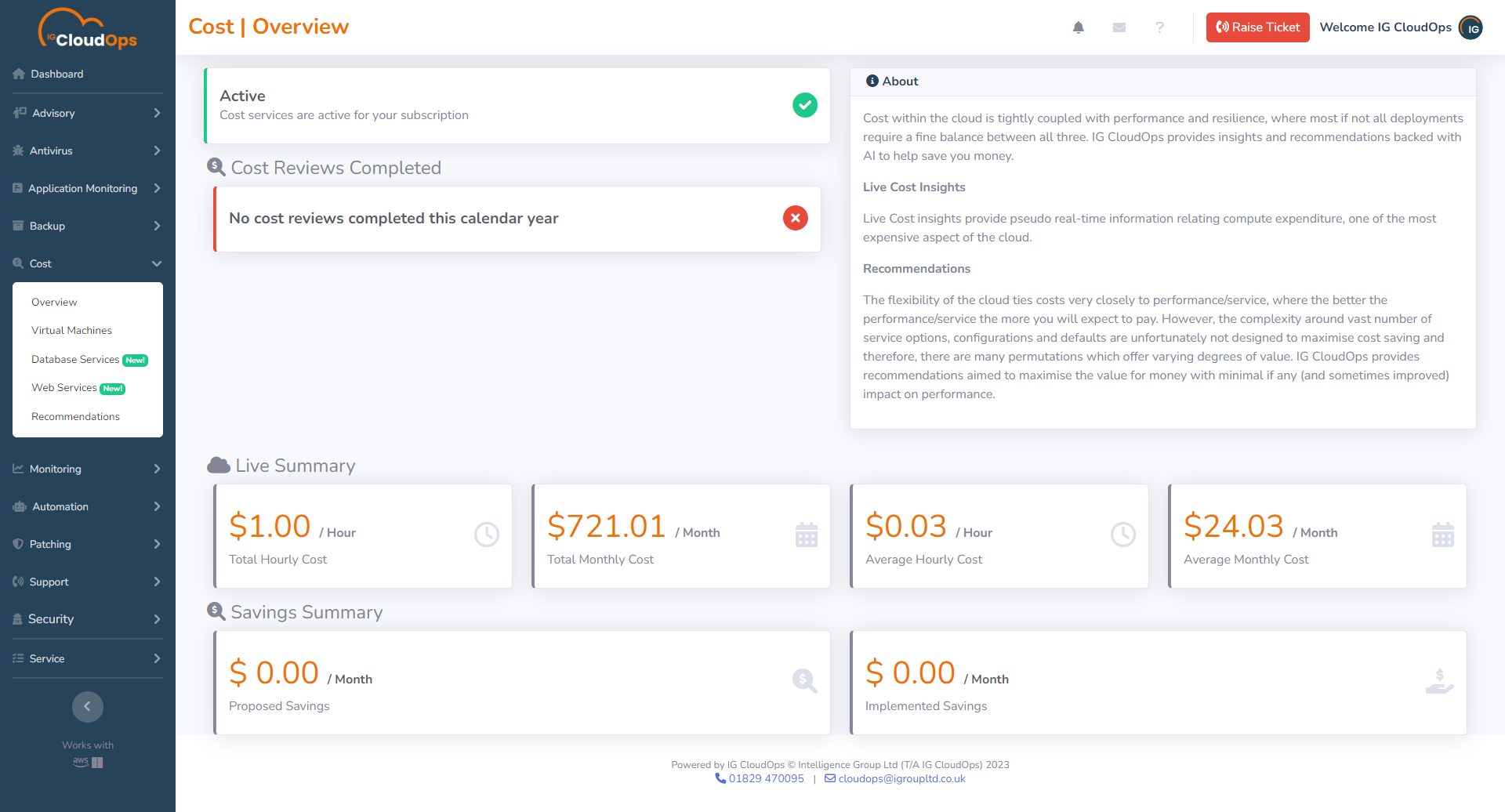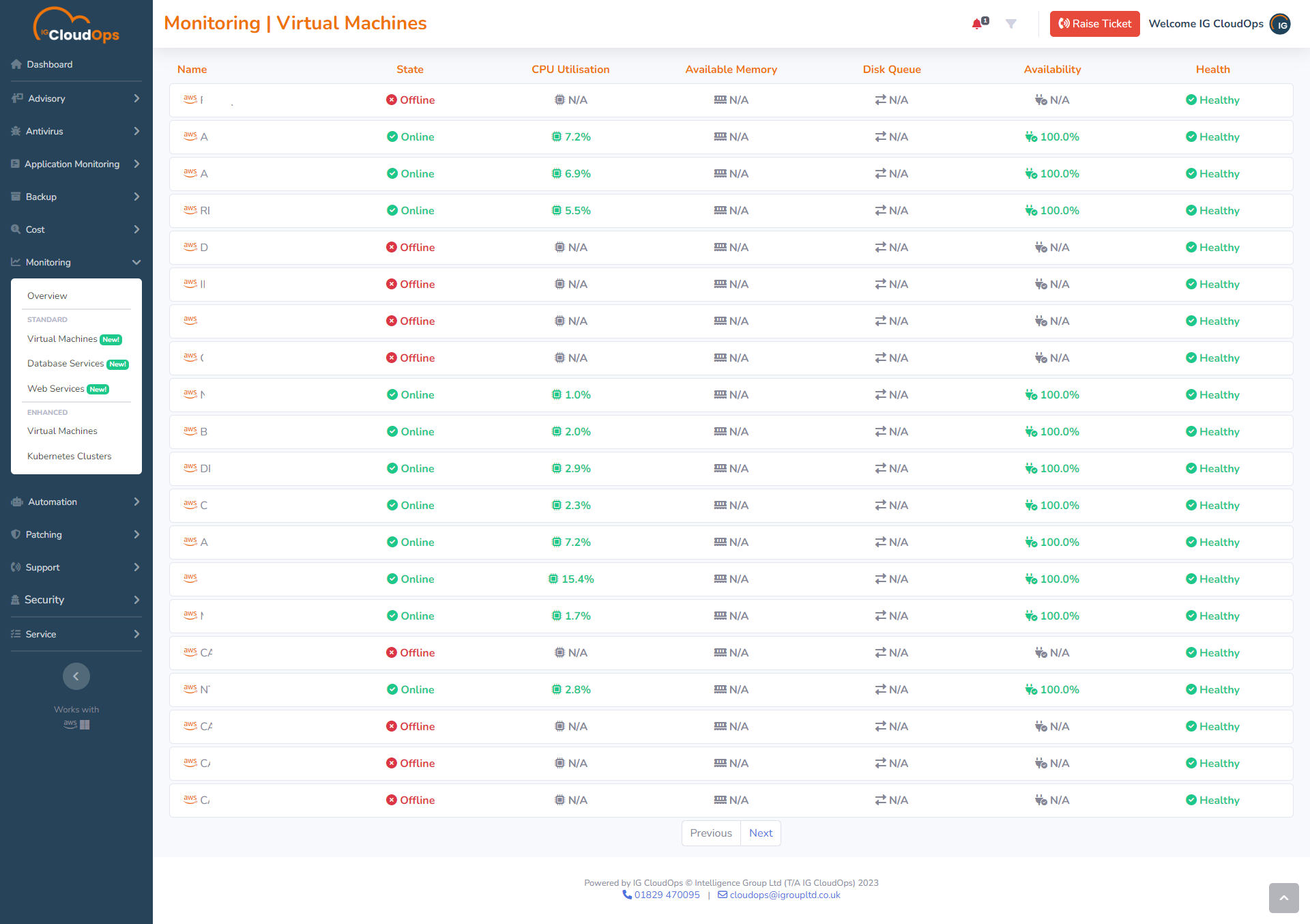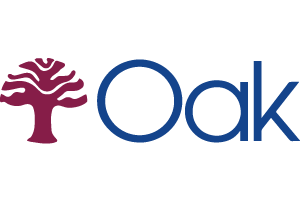NoOps: CloudOps delivers IT Operational Excellence for DevOps teams
Summary
If you're interested in learning more about NoOps or considering implementing it in your own organization, our latest article is a great place to start. Take your first steps on the quest for completely automated IT operations.
This article assumes that your IT operations are in the cloud already or are moving to the cloud shortly and focuses on a cloud-based implementation with Amazon web services (AWS) and or Microsoft Azure.
Book a Test Drive Online - The test drive is not a software demo, it’s a briefing before we hand you the keys!
There are many advantages of test driving a product before you buy it and at IG CloudOps we would strongly suggest that you test drive before you buy.
Whether you’re looking at putting in place support or reducing the cost of your infrastructure, working with a new cloud partner and implementing AWS & Azure management software is a big step.
Getting as much information about how we will work with you and accelerate your AWS & Azure deployments helps you make that step with confidence.
What is NoOps?
NoOps is a term used in the tech industry to describe a company or organization that does not have an IT operations or engineering team.
NoOps is a term used to describe a business or organisational model where there is no dedicated operations team. This means that the responsibility for running and maintaining the cloud infrastructure falls to the developers instead. Proponents of NoOps argue that it can help organisations focus on their product roadmap instead of running cloud infrastructure.
NoOps, or no operations, is a movement in information technology (IT) that encourages the use of self-organizing principles to manage IT infrastructure. Proponents of NoOps believe that this approach can eliminate the need for dedicated IT operations staff, and instead rely on the collective intelligence and skills of the entire organization to manage and operate IT systems. While NoOps is still a relatively new concept, there are a number of organizations that have successfully implemented it and seen significant benefits.
How does NoOps work?
In a typical NoOps organisation, developers are responsible for building, testing, and deploying their own applications. They also take on the responsibility for ensuring that their applications are running smoothly and are properly scaled. This usually requires developers to have a good understanding of how the underlying infrastructure works and how to use the appropriate tools and technologies.
Development and operations have conflicting goals (DevOps vs NoOps)
Lee Thompson and Andrew Shafer summarised the conflict between operational and development teams as a "Wall of Confusion". The development team want to drive change and innovation, whereas the operations team want to maintain and deliver business as usual.
Do you have an operations team to manage?
Managing an operation team can be very challenging. One of the biggest challenges is ensuring that all members of the team are working together towards the same goal. If you could remove the need for an operations-focused team and get everyone focused on your project roadmap that can be a huge commercial advantage.
Operations teams play a critical role in businesses by managing the day-to-day tasks that keep the company running. However, managing an operations team can be challenging, as there are a variety of factors to consider. One challenge is ensuring that all tasks are completed efficiently and on time. This can be difficult when there are multiple tasks to complete and limited resources.
Additionally, it is important to ensure that all employees are properly trained and have the necessary skills to do their jobs. This can be a challenge when there are new employees or when employees need to be cross-trained in multiple areas.
Finally, it is important to ensure that the company's procedures and policies are followed correctly. This can be difficult when changes need to be made or when employees do not follow the procedures correctly.
Overall, an operations team focus is on providing reliable service to customers. Before making wholesale changes to your business operations you really need to consider how this goal will be achieved without an operations team.
Planning, architecting and delivering a global cloud infrastructure for IMI Plc.
What are the benefits of NoOps?
Standard benefits:
- Eliminate the need for a dedicated operations teams (Automation where possible)
- Reduce operating costs (This mainly relates to staff time spent on management, configuration, and monitoring cloud infrastructure)
- Improve system reliability and uptime (Automated processes with unified cloud management to see and respond to issues earlier before they impact your customers)
Commercial benefits:
- Gain a competitive edge in the tech industry (Automation of development environments, Automation of day-to-day activities like patching, Automation of updates, Automation of deployments from UAT to production)
- Enjoy a faster time to market for new products, services and updates (More focus on developer-led roadmaps, Automations of developer environments)
- Focus on software development i.e. DevOps (Focus on your roadmap and driving value for customers)
The NoOps philosophy is based on the following principles:
- Automation: NoOps relies heavily on automation to manage IT infrastructure. All tasks that can be completely automated should be, in order to free up time for more important tasks. (Automating becomes a focus)
- Self-organizing: NoOps teams are self-organizing, meaning they are responsible for their own work and can make decisions without needing approval from a central authority.
- Collective intelligence: NoOps teams rely on the collective intelligence of the entire organization, not just the IT department. This allows for better decision-making and faster response times. (It can also foster a closer identity for the teams involved across the organisation)
Using NoOps in a SaaS business?
Some of the key benefits of NoOps for SaaS / ISV include:
- Increased focus on product development - By removing the need to focus on infrastructure management, developers can concentrate on developing new features and products. This can lead to faster time-to-market and increased innovation.
- Increased efficiency and agility - Developers can quickly deploy changes and new features without having to go through a lengthy approval process. This makes it easier to respond to changes in the market or customer demands.
- Reduced costs - NoOps can help reduce costs by eliminating the need for a dedicated operations team. It also allows businesses to use lower-cost cloud infrastructure services such as Amazon Web Services (AWS) or Microsoft Azure.
What are the biggest risks/challenges with a NoOps model?
- Cultural: One of the biggest challenges of NoOps is cultural. It can be difficult to get buy-in from all members of the organization, especially if they are not used to working in a NoOps environment.
- Technical: Another challenge is technical. In order for NoOps to work effectively, everyone in the organization needs to have a good understanding of the underlying infrastructure and how to use the appropriate tools and technologies. The use of cloud management software with supporting services from a partner can also accelerate this and keep it on track.
- Organizational: One final challenge is organizational. In order to implement NoOps effectively, businesses need to have well-organized development and operations structures with clear roles and responsibilities.
Why NoOps? A focused DevOps Model, but not in one big bang!
The end goal of NoOps is to automate away operations management and allow the organisation to focus on development. However, this doesn't all need to be done in one go!
NoOps can be achieved gradually by automating away routine tasks and moving towards self-service models. This can be done through the use of DevOps tools and techniques which help to speed up the process of getting new features into production. By automating processes such as change management, testing and deployment, organisations can free up time and resources to focus on development.
It's possible to move in this direction incrementally by slowly implementing automation and removing manual steps and by training developers to take on some of the operations tasks. This allows organisations to gradually move towards a NoOps model without making any sudden changes that could disrupt operations.
How does IG CloudOps fit in?
The headline line on our website for our AWS & Azure management software CloudOps is 'Focus on your software, not on managing infrastructure'.
This is what our customers who are independent software vendors (ISVs) or software as a service businesses (SaaS) tell us they were looking for when they found CloudOps. A way to reduce/remove the time they spend maintaining, provisioning and fire-fighting within their business.
That's not to say that all of them have removed those cloud infrastructure capabilities within their business. Many of them have development teams that as well as developers also include cloud architects or team members with other skills. It's just that implementing CloudOps has given them a level of visibility and control over the cloud platforms they were lacking before.
It has allowed them to focus on their roadmaps for their software products, not on the cloud management challenges they were facing. As a result, we have customers who are now able to move much faster with their product development than before and as a consequence are delivering new features and functionality to their customers at a pace that was not possible when they did not have CloudOps.
How to make the switch to NoOps with CloudOps
One of the first steps is to get full visibility of your cloud environment and understand where the time that is spent managing your cloud infrastructure goes. For more background on why we think cloud management software should be part of your AWS & Azure management strategy please read our article on the subject here.
Is it planned or reactive work that is taking attention away from your product roadmap? If it's reactive work on your cloud deployments then implementing CloudOps for unified cloud management across AWS & Azure can have an impact on day 1. CloudOps will give you visibility of cost, and maintenance and allow you to log risks and move towards becoming more planned in your cloud approach instead of fire fighting.
Implementing CloudOps across your cloud environment allows you to move towards a NoOps environment, where CloudOps provides the visibility, automation and recommendations to keep you on track. This move away from a team to manage and toward automation can be done incrementally and CloudOps can give you key recommendations around cost and maintenance processes.
Automation can't remove the need for expert advice in some instances such as new architecture implementation. For this reason, CloudOps Essentials and Professional also include provision for bundled support and advisory services. This allows you to call on expert advice and support when you need it at no additional cost. This gives you the cover you need for your cloud environment when you need it without having an operations team in-house.
The future of NoOps is CloudOps
You don't need to take our word for it, look at our case studies and how our ISV / SaaS business customers are utilising CloudOps to enable a NoOps approach.
You can also call us on 0151 332 3839 or 0203 697 0302 and speak to a member of our team.
CloudOps Active Management Solution Screen Shots

Unified cloud management - CloudOps Central dashboard for all your AWS & Azure infrastructure

Cost Analysis & recommendations - Overview of your live cloud spend. Specific recommendations to reduce your spend and balance performance

Also full (EC2) virtual machine monitoring included as standard across multiple providers / regions

CloudOps now includes Kubernetes cluster monitoring on the home page dashboard

Kubernetes Nodes with full monitoring across multiple regions and providers (AWS & Azure)

Manage your patching and maintenance schedule for your AWS & Azure cloud services

Support for AWS & Azure available in CloudOps Essentials & Professional







Book a CloudOps Test Drive Online - The test drive is not a software demo, it’s a briefing before we hand you the keys!
Whether you’re looking at putting in place support or reducing the cost of your infrastructure, working with a new partner and implementing cloud management software is a big step.
Getting as much information about how we will work with you and accelerate your AWS & Azure deployments helps you make that step with confidence.
CloudOps is designed specifically to give you full transparency, control, and support, for your cloud infrastructure.
Get in touch with a member of our team to learn more, and we’d be happy to help!

Steve Rastall - Managing Director
Get in touch:Steve.Rastall@igcloudops.com









